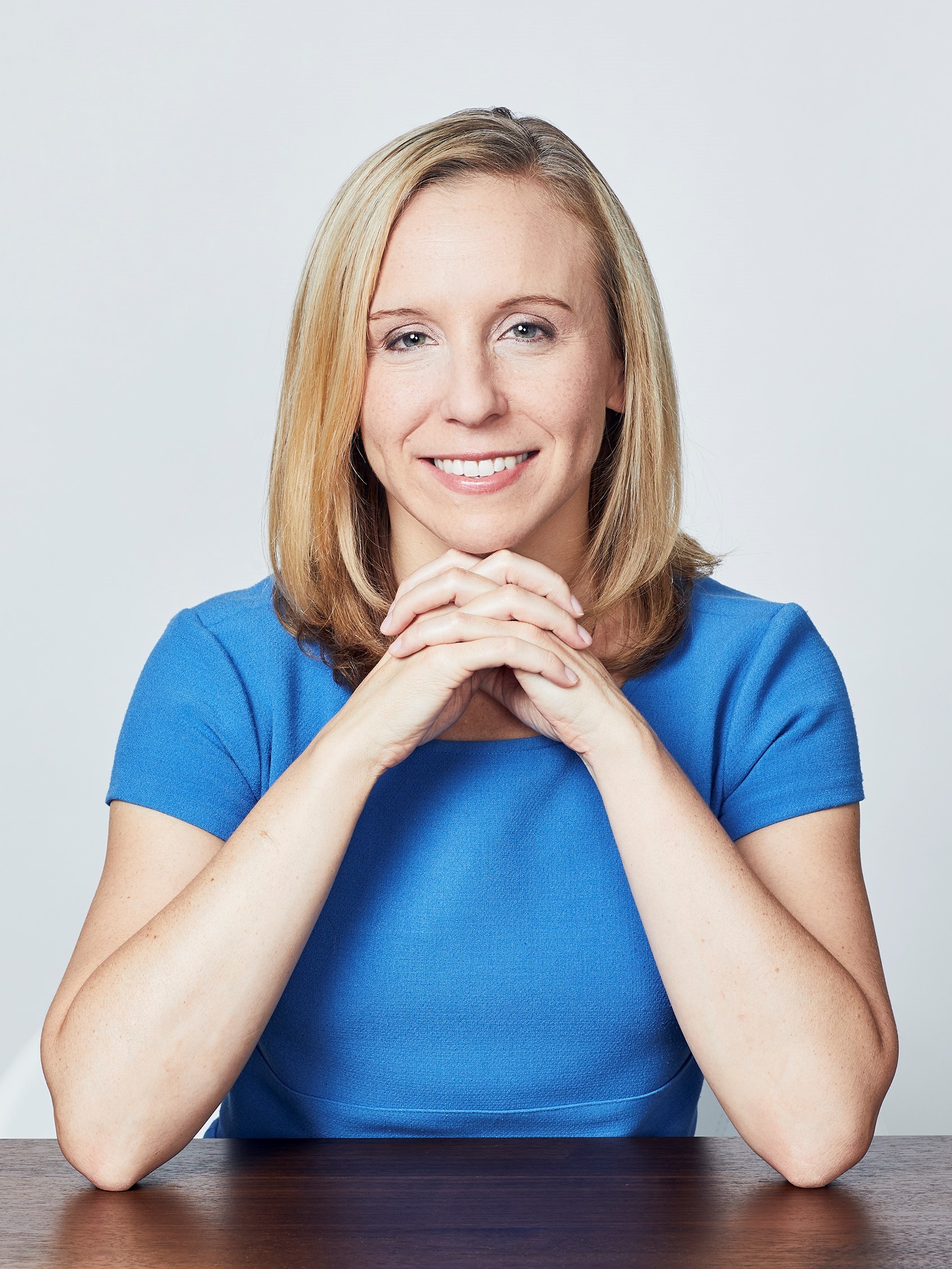As a new decade dawns, Americans are united in their frustration with rising health care costs, a broken criminal justice system, the continuation of a deadly opioid epidemic and the lack of access to affordable, high-quality education.
With consensus crystallizing around the necessity for reform, 2020 is setting up to become a year for state and federal lawmakers to finally take meaningful action on these pressing issues. Here’s what we’re watching this year:
Criminal Justice: A Focus on Local Progress
Prediction from Jeremy Travis, Executive Vice President of Criminal Justice:
We live in an age of mass incarceration. One in three people in the United States has some kind of criminal record, and one in two has a family member who’s been incarcerated. Millions upon millions have been touched by our criminal justice system, and communities of color have borne the brunt of that harm. Those collective experiences are fueling a nationwide reform movement.

The year begins with this reform movement influencing the highest levels of political debate. The top Democratic candidates for president have given criminal justice issues a home in their policy platforms, elevating causes such as the elimination of private prisons and changing federal incentives in order to reduce incarceration rates. However, much of this work depends on the outcome of the election in November. Republicans and Democrats have demonstrated they can work together to improve our nation’s criminal justice system when they passed the First Step Act and the Fair Chance Act, but the federal process is littered with road blocks and gridlock that make progress slow — when it comes at all.
We’re more likely to see criminal justice reform happen at the state and local levels. For example, New York and New Jersey have already reformed their bail systems. Expect these reforms to become the new norm as more jurisdictions move away from cash bail and increasingly treat pretrial incarceration as a last resort.
You should also expect to see significant changes to community supervision programs over the next decade. Roughly 4.5 million people are on probation or parole — twice the incarcerated population. These programs are intended to transition people away from the criminal justice system and toward productive lives. However, a groundbreaking report by Arnold Ventures and the Council of State Governments found that community supervision programs often keep people unnecessarily entangled with the criminal justice system. Forty-five percent of state prison admissions nationwide are the result of supervision violations — either for new crimes or breaking supervision rules. Advocates like Meek Mill are helping to bring attention to this broken and unsustainable system.
Finally, we will likely see a newfound focus on prison conditions. Some departments of corrections are beginning to shift away from a warehousing mentality and embrace their responsibility for rehabilitation and reentry. This will mean shorter sentences, better conditions for those behind bars — prison employees and the incarcerated alike — and a mission that centers on the humanity of everyone involved. Some states saw their prison populations decline by double digit percentages over the last two decades, and those trends will hopefully continue into the next one. Don’t be surprised if this prison reform also involves an assertion of political rights, including the right to vote while incarcerated and an end to prison gerrymandering.
We’re starting the year with plenty of momentum, and there are almost too many issues to list — violence intervention programs, alternative approaches to people in crisis, reducing the reliance on unfair fines and fees, and halting driver’s license revocations as punishment.
This may be the decade when the United States finally begins to turn away from mass incarceration, end our overly punitive response to crime, and recognize the harms inflicted on communities of color by the criminal justice system.
Health Care: A Focus on Cost
Prediction from: Rhiannon Collette, Communications Manager:
From unaffordable drug prices to exorbitant emergency room tabs, Americans are shelling out more than ever before for health care — and they’re fed up.
Amid the growing outrage about skyrocketing costs, Congress made significant movement last year on policies to rein in drug prices and curtail the practice of surprise billing, but progress stalled as the year came to a close.
These issues are expected to gain renewed attention in 2020 as both parties return to Capitol Hill to find solutions on problems that are widely detested across the United States. An overwhelming 94 percent of voters say they want Congress to end the practice of surprise billing and 8 in 10 voters think prices for prescription drugs are unreasonable, with a large majority demanding Congressional action.
Although a Democrat-backed drug pricing proposal that passed the House late last year is unlikely to gain Republican support in the Senate, federal legislators are facing significant pressure to do something about high-priced prescription drugs. House Democrats passed a package at the end of the year that included a proposal for Medicare negotiation for prescription drugs as well as other measures to make drugs more affordable for Americans. A less ambitious bipartisan proposal, led by the Senate Finance Committee, is under consideration in the Senate but needs to find support among Republicans.
A bipartisan compromise has been put on the table on surprise billing, and although it failed to get included in the end-of-year spending agreement, public pressure for a fix is strong, and lawmakers are expected to pick up the issue again.
Beyond the major legislative policies that have been dominating the national conversation, there are other interesting discussions that we’d like to see getting more attention in the coming year.
For example, we all know that health care in the U.S.is broken. But for individuals who need medical care, assistance with daily living, mental health care, and who live in poverty, that dysfunction leads to increased costs and poor outcomes. This year, we’re eyeing state and federal policies aimed at improving care for folks with complex care needs, especially those are covered by both Medicare and Medicaid, the so-called “dual-eligible population.”
And as Medicare for All continues to be debated on Democratic debate stages, we can’t help but wonder how much money Americans could save if we had Medicare Prices (or some multiple of Medicare prices) for All. A few states have started eyeing different ways of providing — and paying for — health coverage. States like Washington, which is implementing a public option, and Colorado, which may be on the cusp of doing the same, may indeed become the spark to ignite change.
Only time will tell.
Opioids: A Focus on Evidence-Based Treatment
Prediction from: Sarah Twardock, Public Health Manager:
Opioids continue to claim thousands of American lives at a rapid pace, and while 2019 brought intense scrutiny and legal action against the drug manufacturers that played a role in the epidemic, the crisis remains a key concern across the United States.

At the federal level, I’ll be keeping a close eye on legislation to remove a requirement requiring physicians to obtain a special waiver before they can prescribe buprenorphine, an evidence-based treatment option that has proven to be effective in curtailing cravings for opioids and assisting with withdrawal symptoms. The so-called X waiver unnecessarily complicates a physician’s ability to provide access to this lifesaving drug. Under H.R. 2482, physicians could prescribe buprenorphine without the waiver and give more people access to a gold standard treatment for opioid addiction. The bill is awaiting a committee vote, but given the support it’s attracted on both sides of the aisle, we think the odds are good that it will pass.
Meanwhile, Congress and the Substance Abuse and Mental Health Services Administration (SAMHSA), the federal agency overseeing the U.S. response to substance abuse and mental illness, continue to award grants to states to tackle the opioid crisis in their own communities. With $1 billion available, states have been given a big boost in addressing opioid addiction, and we’re looking forward to seeing the results of those efforts.This large pool of federal dollars will be supplemented by billions in damages that we expect will be paid out to states, counties, cities, Native American tribes, hospitals, and other groups nationwide to settle lawsuits against those who contributed to the epidemic, including opioid manufacturers, distributors, and retail pharmacy chains.While the landscape is constantly evolving, we predict that a number of bellwether trials will take place in state courts this year. (We’ll be keeping a close eye on the New York state trial scheduled for March.) These legal proceedings will continue to put pressure on the multi-district negotiations being heard in a federal court in Cleveland to reach a global settlement.At the statewide level, a huge priority is expanding access to treatment with medication, combining behavioral therapy and counseling with medications like buprenorphine to treat opioid use disorders and sustain recovery. More states and counties have announced that they will provide such treatment to incarcerated individuals, and we anticipate that states will continue to improve insurance coverage for medication for opioid use disorder, mandate coverage for medications that treat opioid use disorder, and remove prior authorizations for such medications.
Higher Education: A Focus on Quality
Prediction from: Kelly McManus, Director of Higher Education:
I am going to be bold: Free college will NOT be the only higher education issue Americans talk about this year. As we get deeper into the election cycle, I believe we will see more and more people ask not just how we can make higher education more affordable, but how we can make it better.

There was bipartisan momentum in Congress in the second half of 2019 to make important policy changes that will give us a more accountable higher education system that increases economic mobility and protects taxpayer investments. I predict that momentum will continue in 2020.
Ideally, we will end 2020 with a bipartisan Higher Education Act reauthorization that significantly advances quality and accountability in our higher ed system — but given the gridlock in Congress that might not be possible. At minimum, though, I expect that Congress will take some small, concrete, common sense steps forward, starting with passing the bipartisan College Transparency Act and the Protect VETS Act. These would be small, but significant, improvements to our system and lay the groundwork for future reform.
Public Finance: A Focus on the Deficit
Prediction from: Michelle Welch, Director of Public Finance:
Faced with a new decade, families across the country are thinking through their finances and planning for the future; elected officials should be doing the same. However, in election years, policy makers seem to be even less concerned with the long-term consequences of their actions. As a result, in 2020 I expect to see even more decisions designed to appeal to voters on Election Day rather than improving the lives of their constituents for years to come.

The U.S. Congress will avoid difficult budget decisions and continue to add to the deficit — despite the clear evidence that large deficits hurt economic growth and put the country at greater risk of a fiscal crisis. In 2020, the federal deficit will exceed $1.1 trillion, and the federal debt held by the public will exceed 80 percent of GDP — our country’s highest percentage since World War II, and the largest ever during an economic expansion.
At the state level, political pressure will push legislators to reduce budgetary surpluses through tax breaks rather than saving for the next rainy day. Nebraska is planning to reduce property taxes for K‑12 education by $100 million a year and use their current surplus to fill the gap. Faced with tight budgets, some states may try to defer long-term liability payments. The Kansas governor is proposing a plan that would lower annual contributions to the state’s retirement plans, freeing up dollars this year but increasing overall costs by $4.4 billion in the long run.
Beyond this year, we can look forward to an opportunity to work with policymakers to pass significant public finance reforms, and so we must lay the groundwork in 2020. From the presidential candidates alone, there are more than 300 proposed tax ideas. We can look to groups like the Tax Policy Center, the Committee for a Responsible Federal Budget, and the Penn Wharton Budget Model to assess the impact and feasibility of these plans. However, to see improvements beyond 2020, we must also demand responsible fiscal practices this election cycle.
Evidence-Based Policy: More Proven-Effective Strategies to Address U.S. Social Problems
Prediction from: Jon Baron, Vice President of Evidence-Based Policy:
Our nation faces persistent social problems, such as stagnant incomes for the bottom 40 percent of the population, no overall gains in educational achievement of high school students since the 1970s, and a drug epidemic that is now the worst in American history.

The critical missing piece needed to address these problems is credible evidence about “what works”— specifically, a body of programs rigorously demonstrated to move the needle on poverty, educational failure, substance abuse, and other problems. But that is changing. Thanks to the rapid growth in rigorous program evaluations — particularly randomized controlled trials — over the past 20 years, the number of programs shown to produce important improvements in people’s lives, while still limited, is increasing. Recent examples include Project QUEST and Per Scholas job training programs, KIPP Charter Schools, City University of New York’s ASAP program, and Teen Options to Prevent Pregnancy, among others.
This year promises to add to the growing number of truly effective programs that can be deployed to move the needle on major national problems.




















